
Madrid: A Tapestry of Culture and Passion
Discover Madrid: A city where history meets modernity, offering world-class art, diverse cuisine, and a vibrant nightlife amid stunning architecture and beautiful parks.
Madrid, the vibrant capital of Spain, is a city where tradition and modernity blend seamlessly. Known for its rich history, world-class art museums, and lively nightlife, Madrid offers an unforgettable experience for every traveler. As you walk through its elegant streets, you will be enchanted by a mix of architectural styles, from medieval to contemporary designs. The grandeur of the Royal Palace and the bustling energy of Puerta del Sol are testaments to the city's dynamic character. Art lovers will find Madrid to be a paradise, home to the 'Golden Triangle of Art' which includes the Prado Museum, the Reina Sofia Museum, and the Thyssen-Bornemisza Museum. Each of these institutions houses an impressive collection of masterpieces, from the works of Velázquez and Goya to Picasso's iconic Guernica. The city's dedication to the arts is also evident in its numerous galleries and cultural centers, making it a hub for creativity and inspiration. When it comes to cuisine, Madrid's culinary scene is both diverse and delectable. From traditional tapas bars to innovative Michelin-starred restaurants, there is something to satisfy every palate. Don't miss the chance to try local specialties such as cocido madrileño, a hearty chickpea stew, or churros dipped in thick hot chocolate. As the sun sets, the city's vibrant nightlife comes alive, with countless bars, clubs, and live music venues offering a taste of Madrid's spirited social scene. Beyond its cultural and culinary offerings, Madrid is also known for its beautiful parks and gardens. The expansive Retiro Park, once a royal retreat, is perfect for a leisurely stroll or a boat ride on the lake. For panoramic views of the city, head to the rooftop terrace of the Círculo de Bellas Artes or the Teleférico cable car. Whether you're exploring historic landmarks, indulging in delicious food, or simply soaking in the lively atmosphere, Madrid promises an enriching and memorable visit.
Local tips in Madrid
- Visit museums on specific days or times for free entry. For example, the Prado Museum is free on weekdays from 6 PM to 8 PM and Sundays from 5 PM to 7 PM.
- Use the Madrid Metro for efficient and affordable transportation. A 10-trip ticket offers great value for tourists.
- Try to learn a few basic Spanish phrases. Locals appreciate the effort and it can enhance your overall experience.
- Explore different neighborhoods like Malasaña for trendy cafes and shops, or La Latina for traditional tapas and a vibrant atmosphere.
- Keep an eye on your belongings, especially in crowded areas like Puerta del Sol and major tourist attractions, to avoid pickpocketing.
- Take a day trip to nearby attractions such as the historic city of Toledo or the Monastery of El Escorial.
Neighbourhoods in Madrid
Madrid: A Tapestry of Culture and Passion
Madrid, the vibrant capital of Spain, is a city where tradition and modernity blend seamlessly. Known for its rich history, world-class art museums, and lively nightlife, Madrid offers an unforgettable experience for every traveler. As you walk through its elegant streets, you will be enchanted by a mix of architectural styles, from medieval to contemporary designs. The grandeur of the Royal Palace and the bustling energy of Puerta del Sol are testaments to the city's dynamic character. Art lovers will find Madrid to be a paradise, home to the 'Golden Triangle of Art' which includes the Prado Museum, the Reina Sofia Museum, and the Thyssen-Bornemisza Museum. Each of these institutions houses an impressive collection of masterpieces, from the works of Velázquez and Goya to Picasso's iconic Guernica. The city's dedication to the arts is also evident in its numerous galleries and cultural centers, making it a hub for creativity and inspiration. When it comes to cuisine, Madrid's culinary scene is both diverse and delectable. From traditional tapas bars to innovative Michelin-starred restaurants, there is something to satisfy every palate. Don't miss the chance to try local specialties such as cocido madrileño, a hearty chickpea stew, or churros dipped in thick hot chocolate. As the sun sets, the city's vibrant nightlife comes alive, with countless bars, clubs, and live music venues offering a taste of Madrid's spirited social scene. Beyond its cultural and culinary offerings, Madrid is also known for its beautiful parks and gardens. The expansive Retiro Park, once a royal retreat, is perfect for a leisurely stroll or a boat ride on the lake. For panoramic views of the city, head to the rooftop terrace of the Círculo de Bellas Artes or the Teleférico cable car. Whether you're exploring historic landmarks, indulging in delicious food, or simply soaking in the lively atmosphere, Madrid promises an enriching and memorable visit.
When is the best time to go to Madrid?
Iconic landmarks you can’t miss
El Retiro Park
Discover the beauty and tranquility of El Retiro Park, Madrid's iconic green oasis filled with gardens, art, and culture.
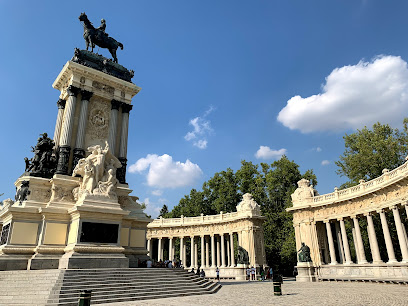
Plaza Mayor
Explore the charm of Plaza Mayor in Madrid, a historical plaza brimming with culture, architecture, and culinary delights.
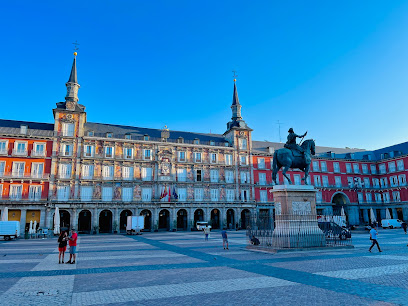
Puerta del Sol
Discover the vibrant heart of Madrid at Puerta del Sol, a historical square filled with culture, iconic landmarks, and the spirit of the city.
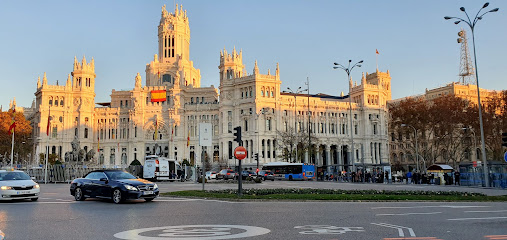
Museo Nacional del Prado
Explore the world-renowned Museo Nacional del Prado, a cultural gem in Madrid featuring masterpieces by Velázquez, Goya, and Bosch.
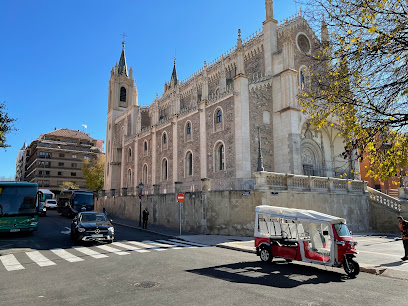
Plaza de España
Discover the enchanting Plaza de España, a historical landmark in Madrid adorned with stunning architecture, lush gardens, and vibrant cultural significance.
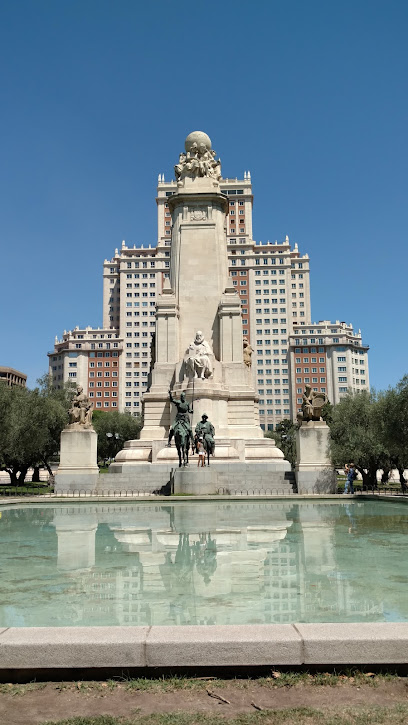
Royal Palace of Madrid
Discover the Royal Palace of Madrid, a historical landmark showcasing royal splendor, exquisite art, and lush gardens in the heart of Spain's capital.
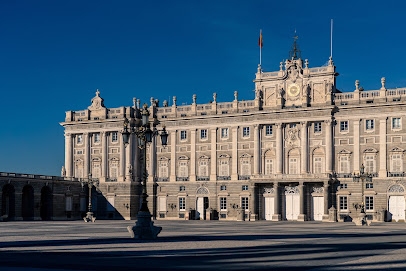
Temple of Debod
Explore the stunning Temple of Debod, an ancient Egyptian monument in Madrid's scenic park, offering history, beauty, and breathtaking views.
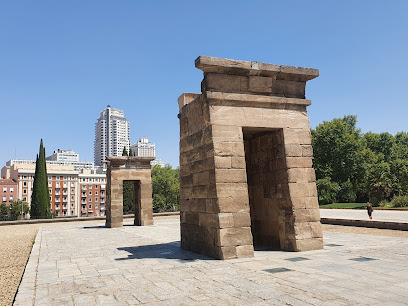
Cibeles Fountain
Discover the enchanting Cibeles Fountain in Madrid, a majestic landmark that combines rich history with stunning artistry, perfect for memorable photographs.
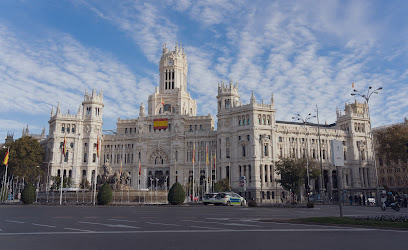
Puerta de Alcalá
Discover the grandeur of Puerta de Alcalá, a neoclassical monument and iconic landmark that embodies the rich history of Madrid.
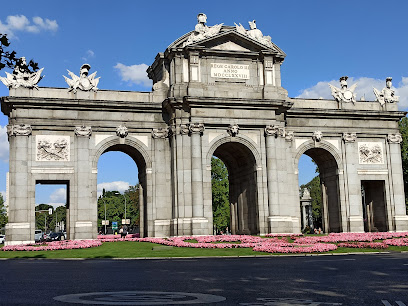
Palacio de Cristal
Discover the enchanting Crystal Palace in Madrid's Retiro Park, a stunning venue for art exhibitions and a serene escape amidst lush gardens.
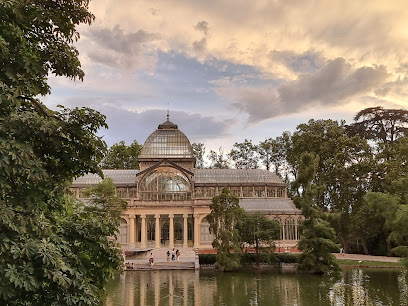
Catedral de la Almudena
Explore the breathtaking Catedral de la Almudena, a striking blend of neoclassical and gothic architecture in the heart of Madrid, rich with history and beauty.
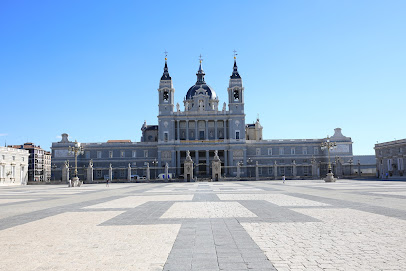
Toledo Gate
Explore the grandeur of Toledo Gate in Madrid, a striking monument that symbolizes the city’s rich history and architectural beauty.
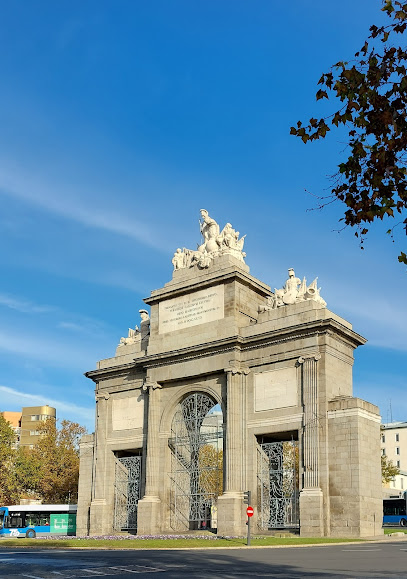
Plaza del Dos de Mayo
Discover the vibrant Plaza del Dos de Mayo, a historic square in Madrid filled with culture, cafes, and beautiful architecture.
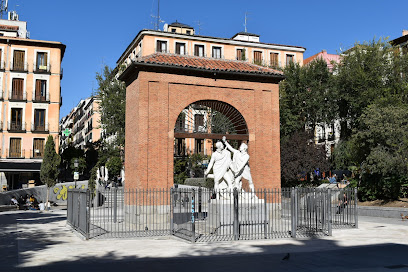
Metropolis Building
Explore the architectural wonder of the Metropolis Building in Madrid, a historical landmark showcasing stunning design and rich cultural heritage.
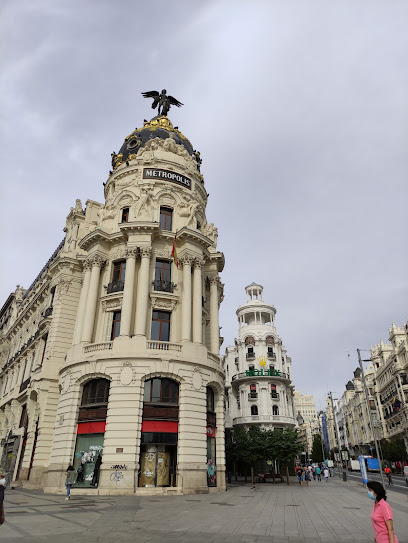
El Oso y el Madroño
Discover the heart of Madrid at El Oso y el Madroño, an iconic symbol and vibrant gathering spot in Puerta del Sol.

Unmissable attractions to see
El Retiro Park
Experience the lush beauty and cultural richness of El Retiro Park, Madrid's beloved green oasis for relaxation and exploration.
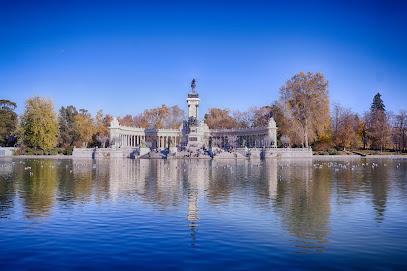
Plaza Mayor
Discover the vibrant heart of Madrid at Plaza Mayor, a historic square surrounded by stunning architecture and lively culture.
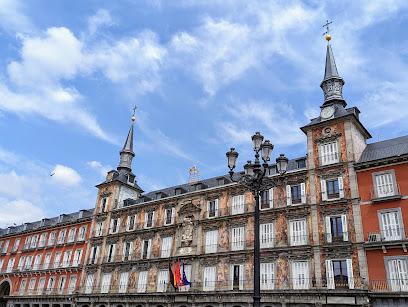
Puerta del Sol
Explore Puerta del Sol, Madrid's iconic square, where history meets modern vibrancy in the heart of Spain's capital city.
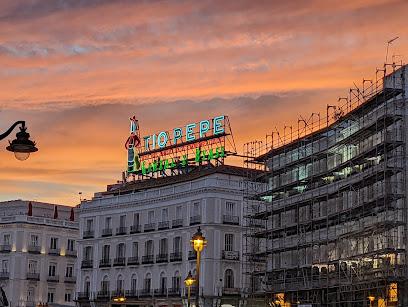
Santiago Bernabéu Stadium
Explore the iconic Santiago Bernabéu Stadium, home of Real Madrid, and immerse yourself in the world of soccer in Madrid.

Museo Nacional del Prado
Explore the Museo Nacional del Prado, Madrid's premier art museum, showcasing masterpieces from the greats of European art history.
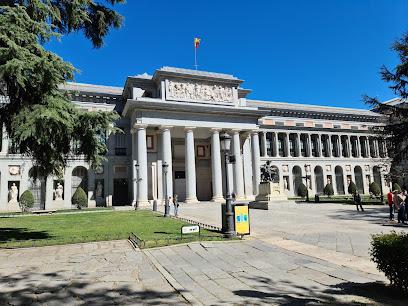
Mercado de San Miguel
Experience the vibrant flavors of Spain at Mercado de San Miguel, Madrid's iconic food market, where culinary tradition meets modern gastronomy.
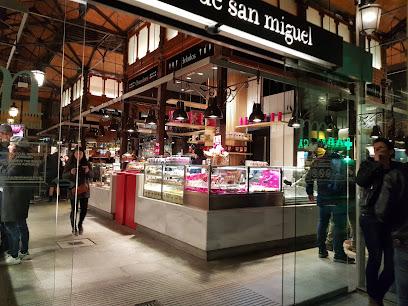
Parque Warner Madrid
Experience the magic of Hollywood at Parque Warner Madrid, where thrilling rides and beloved characters await for an unforgettable adventure.
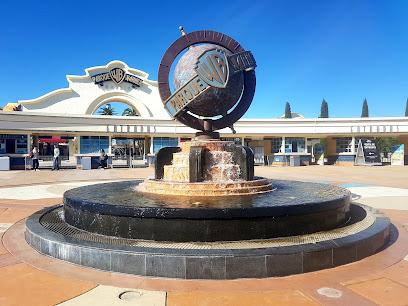
Riyadh Air Metropolitano
Discover the heart of Spanish football at Civitas Metropolitano, home to Atlético de Madrid, where thrilling matches and vibrant culture await.

Museo Nacional Centro de Arte Reina Sofía
Discover the treasures of modern art at Museo Nacional Centro de Arte Reina Sofía, where history meets contemporary creativity in Madrid.
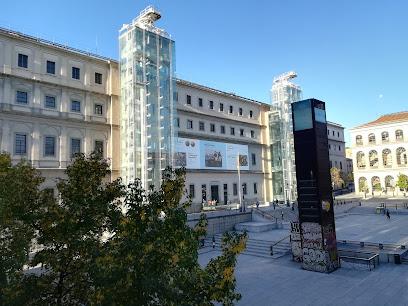
Temple of Debod
Experience the ancient beauty of the Temple of Debod, a stunning Egyptian monument nestled in the heart of Madrid's scenic Parque del Oeste.
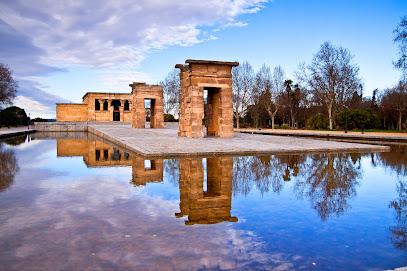
Palacio de Cristal
Explore the iconic Palacio de Cristal in Madrid, a breathtaking museum and event venue surrounded by nature, where art and architecture come alive.

Thyssen-Bornemisza National Museum
Discover the rich tapestry of art history at the Thyssen-Bornemisza National Museum in Madrid, a cultural gem housing masterpieces across centuries.

Las Ventas Bullring
Discover the grandeur of Las Ventas Bullring, a cultural icon in Madrid showcasing the passion and tradition of bullfighting.
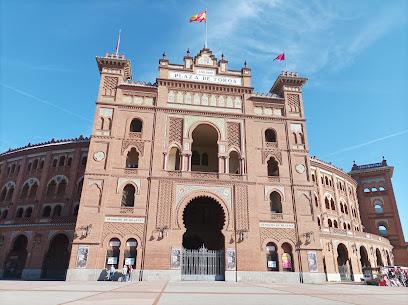
Royal Site of San Lorenzo de El Escorial
Explore the Royal Site of San Lorenzo de El Escorial, a UNESCO World Heritage Site showcasing Spain's rich history and stunning Renaissance architecture.
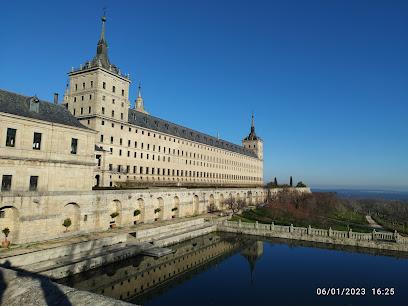
Real Jardín Botánico
Explore the lush landscapes and rich biodiversity of Real Jardín Botánico, a serene botanical garden in the heart of Madrid.
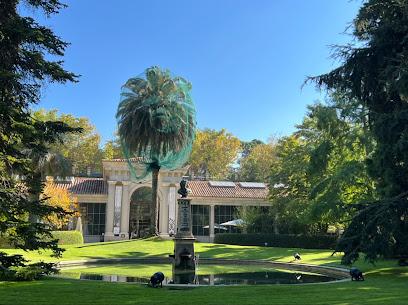
Essential places to dine
Restaurante-Coctelería Inclán Brutal Bar
Savor exquisite tapas and innovative cocktails at Inclán Brutal Bar, Madrid's vibrant culinary gem offering an unforgettable dining experience.
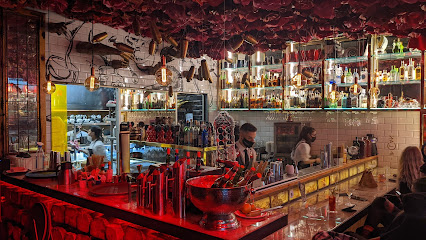
Museo del Jamón
Discover authentic Spanish flavors at Museo del Jamón, where every bite tells a story of tradition and culinary excellence.
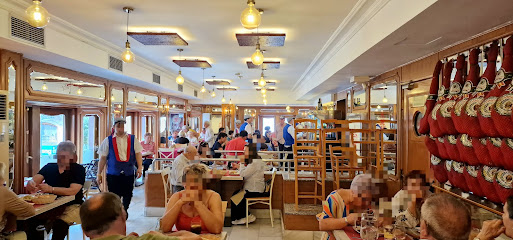
Restaurante Los Montes de Galicia
Savor authentic Galician cuisine at Restaurante Los Montes de Galicia in Madrid – where tradition meets modern elegance.
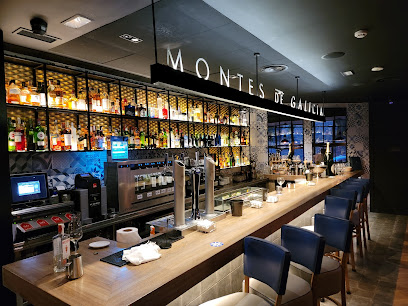
El Minibar
Experience authentic Spanish cuisine at El Minibar – where delicious tapas meet vibrant cocktails in the heart of Madrid.
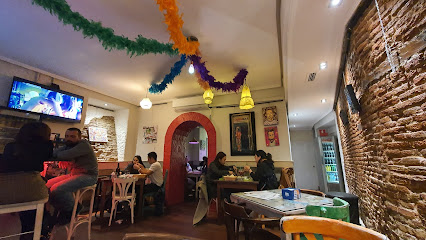
Taberna El Sur
Savor authentic Spanish tapas at Taberna El Sur in Madrid's vibrant Centro district – a culinary gem where tradition meets flavor.
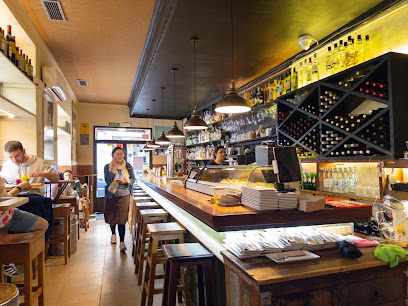
Bodega de los Secretos
Discover the enchanting flavors of Mediterranean cuisine at Bodega de los Secretos in the heart of Madrid.

Fatigas del querer
Discover the heart of Spanish cuisine at Fatigas del Querer - an unforgettable tapas experience in the vibrant streets of Madrid.
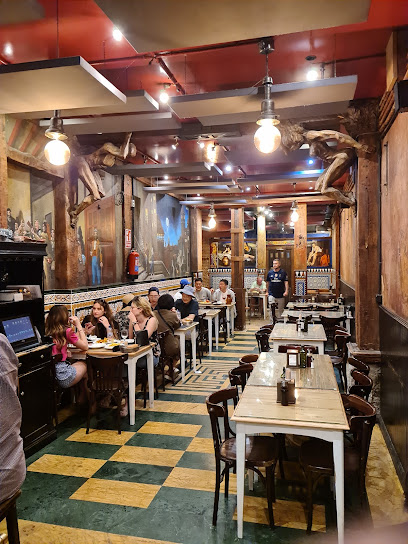
La Mi Venta
Experience the essence of Spain at La Mi Venta: savor traditional Castilian cuisine and grilled delights in the heart of Madrid.
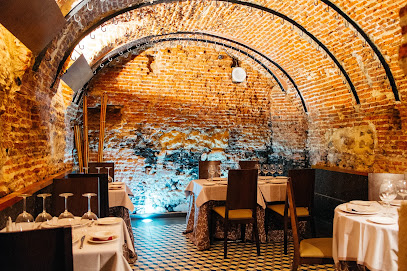
Mas Al Sur
Discover Mas Al Sur: A vibrant tapas bar in Madrid offering delicious Spanish cuisine and creative cocktails in a lively atmosphere.
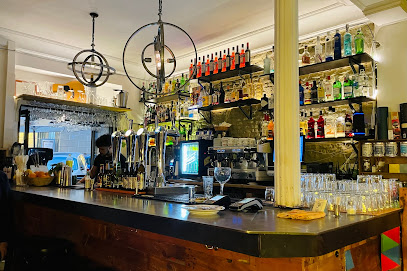
Restaurante La Catedral
Experience authentic Spanish cuisine at Restaurante La Catedral - a culinary haven in Madrid's vibrant Centro district.
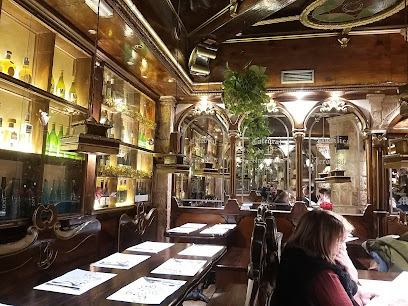
El Jardín Secreto Madrid
Discover El Jardín Secreto in Madrid - where exquisite cuisine meets enchanting ambiance for an unforgettable dining experience.
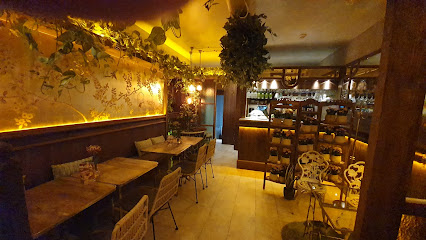
Taberna La Fragua de Vulcano
Savor authentic Spanish flavors at Taberna La Fragua de Vulcano – a cozy bistro in Madrid's Centro district offering delightful culinary experiences.
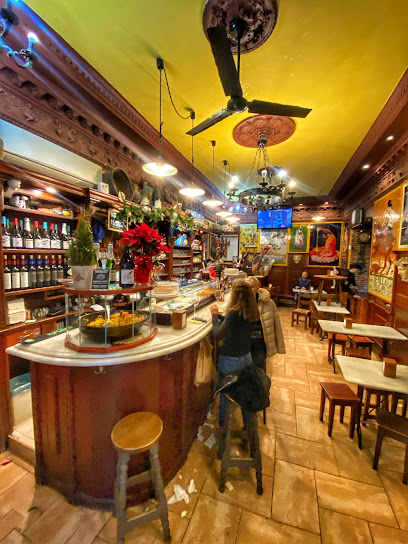
Puerto Rico
Experience authentic Spanish cuisine at Puerto Rico Restaurant in Madrid - a family-friendly destination for tapas lovers.
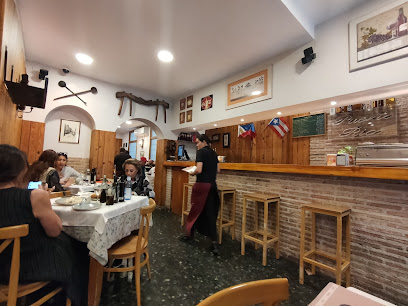
Nice To Meet You Restaurant & Lounge
Discover the vibrant flavors of Mediterranean cuisine at Nice To Meet You Restaurant & Lounge in the heart of Madrid.
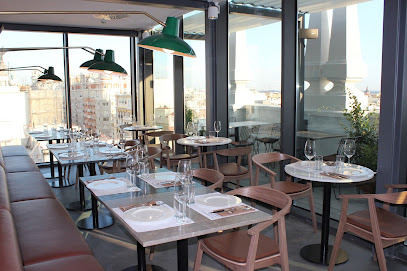
Venta El Buscón
Experience authentic Madrilian cuisine at Venta El Buscón – a charming Spanish tavern in the heart of Madrid offering delicious dishes and vibrant ambiance.
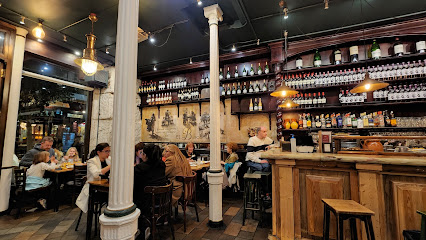
Markets, malls and hidden boutiques
Natura
Explore Natura, Madrid's premier gift shop and clothing store, offering unique souvenirs and stylish apparel in the heart of the city.
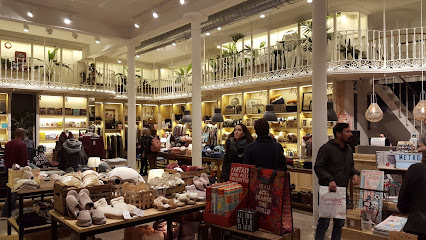
Magpie Vintage
Explore the charm of vintage fashion at Magpie Vintage, a unique clothing store in the heart of Madrid's bustling Centro district, perfect for treasure hunters.
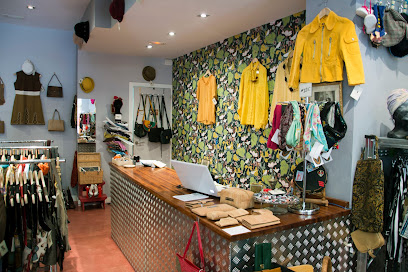
La Antigua
Explore La Antigua, the heart of Madrid's boutique shopping, offering unique artisanal goods and a taste of authentic Spanish culture.
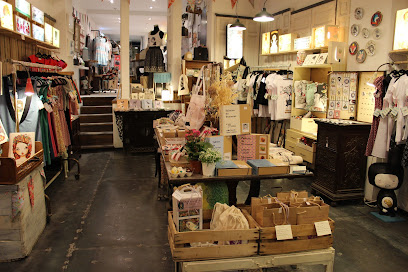
Alphaville vintage shop
Explore Alphaville Vintage Shop in Madrid for unique vintage clothing and accessories, blending fashion with sustainability in a charming atmosphere.
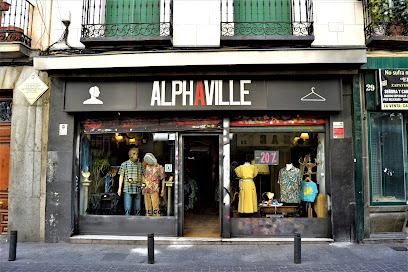
NATURA
Explore the heart of Madrid with NATURA, your go-to destination for unique gifts, stylish clothing, and exquisite costume jewelry.

Temple Susu
Explore Temple Susu in Madrid for unique vintage clothing and accessories, celebrating sustainable fashion with every stylish find.
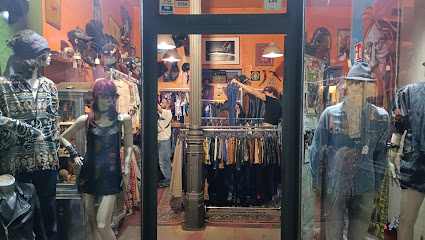
Aramayo Vintage MADRID
Explore unique fashion treasures at Aramayo Vintage in Madrid – your destination for one-of-a-kind vintage clothing.

Ekseption
Explore Ekseption, Madrid's fashion haven, offering haute couture clothing, beauty supplies, and stylish home goods in the heart of Salamanca.
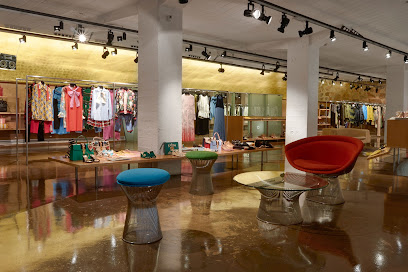
Curiosity shop
Explore the Curiosity Shop in Madrid for unique gifts, local crafts, and memorable souvenirs that capture the essence of your journey.
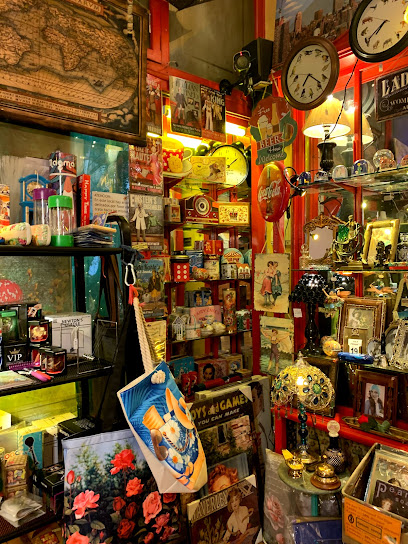
Nest Boutique
Discover unique gifts at Nest Boutique, a charming shop in Madrid's Centro district, perfect for capturing the spirit of the city.
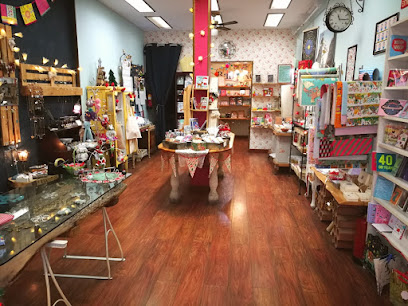
Cocó's couch
Explore Cocó's Couch, a vintage clothing store in Madrid's Centro district, offering unique fashion finds and eclectic accessories that capture the city's spirit.
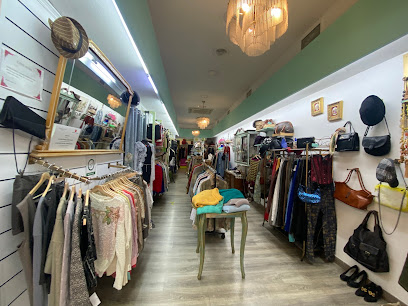
Enraizarte
Discover Enraizarte, Madrid's gem for artistic handicrafts, offering unique gifts that embody the spirit of Spanish culture and creativity.
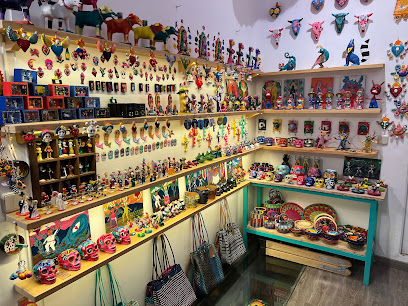
The Intruder Malasaña
Explore the eclectic charm of The Intruder Malasaña, a unique clothing store in Madrid's vibrant fashion scene.
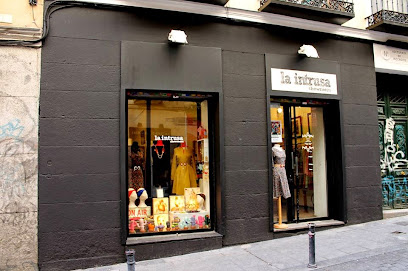
Monkey Garden
Explore Monkey Garden in Madrid: A unique boutique merging fashion and art for an unforgettable shopping experience.
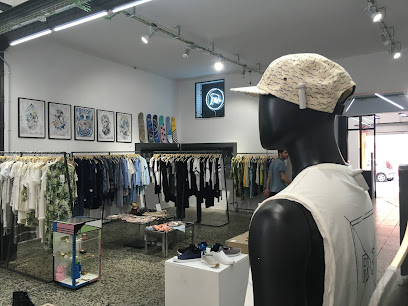
Mini Shop Madrid
Explore the chicest fashion finds at Mini Shop Madrid - your go-to clothing store in the heart of the city for unique styles and trendy outfits.

Essential bars & hidden hideouts
Salmon Guru
Discover the vibrant world of cocktails and culinary delights at Salmon Guru, a must-visit bar in Madrid's lively Centro district.
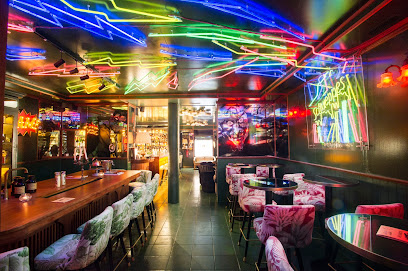
Enbabia Infused
Discover the vibrant nightlife at Enbabia Infused, Madrid's premier cocktail bar with unique infused drinks and a lively atmosphere.
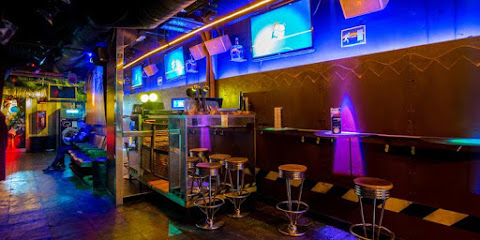
1862 Dry Bar
Discover the art of mixology at 1862 Dry Bar, Madrid's creative cocktail haven in the heart of the city.
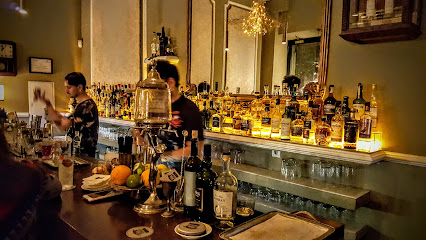
El Imperfecto
Experience the vibrant spirit of Madrid at El Imperfecto, a quirky bar offering innovative cocktails and a lively atmosphere in the heart of the city.
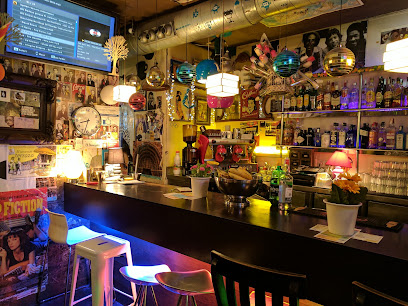
Jazz Bar
Discover the rhythm of Madrid at its finest jazz bar, where every cocktail is a masterpiece and music fills the air.
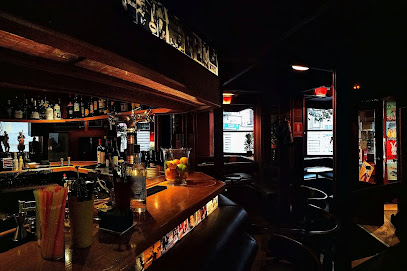
Bad Company 1920
Explore Bad Company 1920 in Madrid - where vintage charm meets modern mixology for an unforgettable cocktail experience.
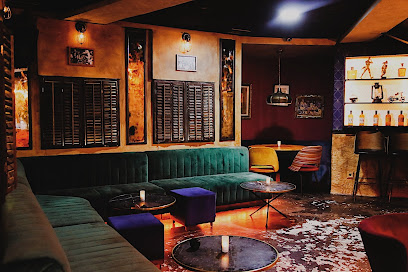
Del Diego Cocktail Bar
Experience the vibrant cocktail culture at Del Diego Cocktail Bar, where expertly crafted drinks and a lively atmosphere await in the heart of Madrid.
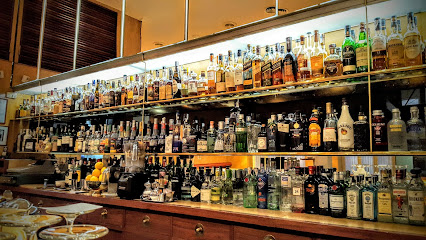
Baton Rouge Cocktail Bar
Discover the vibrant Baton Rouge Cocktail Bar in Madrid, where unique cocktails and lively ambiance create unforgettable nightlife experiences.
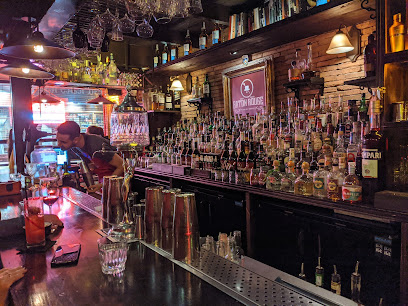
Radio Rooftop Madrid
Experience breathtaking views and exquisite cocktails at Radio Rooftop Madrid, where the skyline meets sophistication in a vibrant rooftop setting.
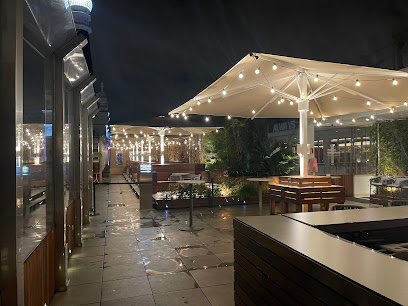
La Santoría Cocktail Bar
Experience the art of cocktail making at La Santoría, a stylish bar in Madrid's Centro district offering an innovative drink menu and a vibrant atmosphere.
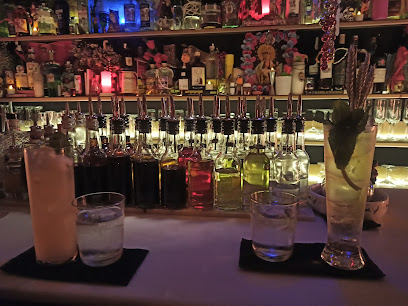
Twist & Shout Bar
Discover the lively ambiance and creative cocktails at Twist & Shout Bar, a must-visit nightlife destination in Madrid's Centro district.

47 cocktail bar
Experience the best of Madrid's nightlife at 47 Cocktail Bar, where exquisite cocktails meet a vibrant atmosphere in the heart of the city.

Ficus Bar
Experience the vibrant nightlife of Madrid at Ficus Bar, known for its innovative cocktails and lively ambiance in the heart of the city.
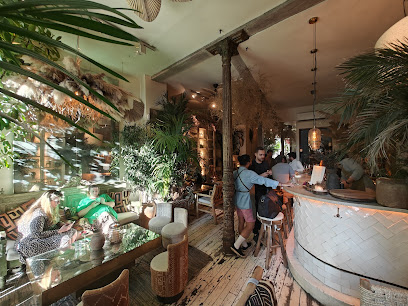
Cafe Madrid
Discover Cafe Madrid, a lively cocktail bar in the heart of Madrid, blending vibrant ambiance with innovative drinks for an unforgettable experience.
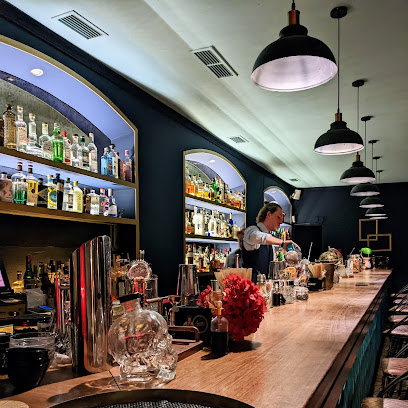
Bar Cock
Experience the vibrant nightlife of Madrid at Bar Cock, where expertly crafted cocktails meet a lively atmosphere in the heart of the city.
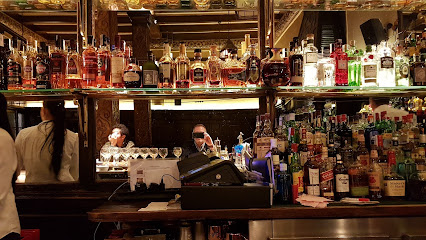
Local Phrases
-
- HelloHola
[oh-lah] - GoodbyeAdiós
[ah-dee-ohs] - YesSí
[see] - NoNo
[noh] - Please/You're welcomePor favor/De nada
[por fah-vor/deh nah-dah] - Thank youGracias
[grah-thyahs] - Excuse me/SorryPerdón/Lo siento
[pehr-dohn/loh see-ehn-toh] - How are you?¿Cómo estás?
[koh-moh ehs-tahs] - Fine. And you?Bien. ¿Y tú?
[byehn. ee too] - Do you speak English?¿Hablas inglés?
[ah-blahs een-glays] - I don't understandNo entiendo
[noh ehn-tee-ehn-doh]
- HelloHola
-
- I'd like to see the menu, pleaseMe gustaría ver la carta, por favor
[meh goos-tah-ree-ah behr lah kahr-tah, por fah-vor] - I don't eat meatNo como carne
[noh koh-moh kahr-neh] - Cheers!¡Salud!
[sah-lood] - I would like to pay, pleaseQuisiera pagar, por favor
[kee-see-eh-rah pah-gahr, por fah-vor]
- I'd like to see the menu, pleaseMe gustaría ver la carta, por favor
-
- Help!¡Ayuda!
[ah-yoo-dah] - Go away!¡Vete!
[veh-teh] - Call the Police!¡Llama a la Policía!
[yah-mah ah lah poh-lee-see-ah] - Call a doctor!¡Llama a un médico!
[yah-mah ah oon meh-dee-koh] - I'm lostEstoy perdido/a
[ehs-toy pehr-dee-doh/dah] - I'm illEstoy enfermo/a
[ehs-toy ehn-fehr-moh/dah]
- Help!¡Ayuda!
-
- I'd like to buy...Me gustaría comprar...
[meh goos-tah-ree-ah kohm-prahr] - I'm just lookingSolo estoy mirando
[soh-loh ehs-toy mee-rahn-doh] - How much is it?¿Cuánto cuesta?
[kwan-to kwehs-tah] - That's too expensiveEso es demasiado caro
[eh-soh ehs deh-mah-see-ah-doh kah-roh] - Can you lower the price?¿Puedes bajar el precio?
[pweh-dehs bah-har ehl pree-see-oh]
- I'd like to buy...Me gustaría comprar...
-
- What time is it?¿Qué hora es?
[keh oh-rah ehs] - It's one o'clockEs la una
[ehs lah oo-nah] - Half past (10)Y media (10)
[ee meh-dee-ah (deh-eez)] - MorningMañana
[mah-nyah-nah] - AfternoonTarde
[tahr-deh] - EveningNoche
[noh-cheh] - YesterdayAyer
[ah-yehr] - TodayHoy
[oy] - TomorrowMañana
[mah-nyah-nah] - 1Uno
[oo-noh] - 2Dos
[dohs] - 3Tres
[trehs] - 4Cuatro
[kwah-troh] - 5Cinco
[theen-koh] - 6Seis
[says] - 7Siete
[syeh-teh] - 8Ocho
[oh-choh] - 9Nueve
[nweh-veh] - 10Diez
[dyehth]
- What time is it?¿Qué hora es?
-
- Where's a/the...?¿Dónde está...?
[dohn-deh ehs-tah] - What's the address?¿Cuál es la dirección?
[kwal ehs lah dee-rehk-syon] - Can you show me (on the map)?¿Puedes enseñarme (en el mapa)?
[pweh-dehs ehn-seh-nyar-meh (ehn ehl mah-pah)] - When's the next (bus)?¿Cuándo es el próximo (autobús)?
[kwan-doh ehs ehl proh-ksee-moh (ow-toh-boos)] - A ticket (to ....)Un billete (para ....)
[oon bee-yeh-teh (pah-rah)]
- Where's a/the...?¿Dónde está...?
History of Madrid
-
The origins of Madrid date back to the 9th century when Muhammad I of Córdoba built a fortress on the site that is now the Palacio Real. This fortress was part of a series of fortifications to protect the Christian frontier from Muslim invasions. The area began to develop as a small town known as 'Magerit'.
-
In 1083, King Alfonso VI of León and Castile captured Madrid as part of the Christian Reconquista. The city's population began to grow, and Madrid gained importance due to its strategic location in the center of the Iberian Peninsula. This period also saw the construction of churches and the expansion of the town.
-
In 1561, King Philip II moved the Spanish court to Madrid, making it the de facto capital of Spain. This decision was influenced by the city's central location and proximity to the royal hunting grounds. The move significantly boosted Madrid's growth and development, transforming it into a political and cultural hub.
-
The Habsburg dynasty, which ruled Spain from the 16th to the 18th century, left a lasting architectural legacy in Madrid. Notable constructions from this period include the Plaza Mayor, the Monasterio de las Descalzas Reales, and the Casa de la Villa. The city's layout also began to take shape during this time.
-
In the 18th century, the Bourbon kings initiated a series of reforms to modernize Madrid. King Charles III, known as the 'Mayor King,' undertook numerous public works, including the creation of the Puerta de Alcalá, the Prado Museum, and the Royal Botanic Garden. These projects aimed to beautify the city and improve public welfare.
-
From 1936 to 1939, Madrid was a focal point of the Spanish Civil War. The city endured significant hardship, including bombings and battles. The siege of Madrid and the defense of the city became symbols of Republican resistance against Nationalist forces. Several historical sites in Madrid still bear the scars of this turbulent period.
-
After the Civil War, Madrid underwent extensive reconstruction. The 1950s and 1960s saw rapid industrialization and urban expansion. The construction of new neighborhoods and infrastructure projects, such as the Gran Vía and the Madrid Metro, contributed to the city's modernization. Madrid also became a cultural center, attracting artists, writers, and intellectuals.
-
Following the death of dictator Francisco Franco in 1975, Madrid played a crucial role in Spain's transition to democracy. The city hosted significant political events, including the drafting of the 1978 Spanish Constitution. The Movida Madrileña, a countercultural movement, emerged during this time, influencing music, art, and fashion in Madrid.
-
In the 21st century, Madrid continues to evolve as a global city. The metropolis has embraced modernity while preserving its rich historical heritage. Major developments include the expansion of the Barajas Airport, the creation of new cultural venues like the Matadero Madrid, and the revitalization of urban spaces such as Madrid Río. The city remains a vibrant cultural and economic center in Spain and Europe.
Madrid Essentials
-
Madrid is accessible by air, rail, and road. The primary airport is Adolfo Suárez Madrid-Barajas Airport (MAD), which serves numerous international and domestic flights. From the airport, you can take a taxi, bus, or the Metro (Line 8) to reach the city center. Madrid is also well-connected by train, with the main railway stations being Atocha and Chamartín, offering high-speed AVE services to various parts of Spain and Europe. If you prefer driving, the city is connected by several highways making it accessible by car or bus from other parts of Spain and neighboring countries.
-
Madrid boasts an efficient public transportation system consisting of the Metro, buses, and commuter trains (Cercanías). The Metro is the fastest way to get around the city, with 12 lines covering most areas. Buses are also plentiful and serve routes that the Metro does not. For nearby towns and suburbs, Cercanías trains are a convenient option. Taxis and ride-sharing services like Uber and Cabify are readily available. For those who prefer cycling, Madrid has a public bike-sharing system called BiciMAD.
-
The official currency in Spain is the Euro (EUR). Credit and debit cards are widely accepted in hotels, restaurants, and shops. ATMs are abundant throughout Madrid, and many offer the option to withdraw cash in various languages. It's always a good idea to carry some cash for small purchases or in case of technical issues with card payments. Tipping is not obligatory but is appreciated; a small tip of around 5-10% in restaurants is customary.
-
Madrid is generally a safe city, but like any large urban area, it has its share of pickpocketing and petty crime, particularly in crowded tourist areas like Puerta del Sol, Gran Vía, and El Rastro market. Exercise standard precautions: keep an eye on your belongings, avoid displaying valuables, and be cautious in crowded places. Areas like Lavapiés and certain parts of Malasaña can have higher crime rates at night, so it's advisable to stay vigilant.
-
In case of emergency, dial 112 for immediate assistance. This number connects you to police, fire, and medical services. Madrid has numerous hospitals and medical centers, with Hospital Universitario La Paz and Hospital Gregorio Marañón being among the largest. Pharmacies are plentiful and typically open until late. It's advisable to have travel insurance that covers medical emergencies. For minor health issues, pharmacists can often provide advice and over-the-counter medications.
-
Fashion: Do dress stylishly but comfortably; Madrid is a fashionable city. Avoid overly casual attire in upscale restaurants and theaters. Religion: Do respect religious traditions, especially when visiting churches. Dress modestly and keep noise to a minimum. Public Transport: Do offer your seat to elderly passengers, pregnant women, and those with disabilities. Don’t eat or drink on the Metro. Greetings: Do greet people with a handshake or a kiss on both cheeks if you know them well. Eating & Drinking: Do try local dishes like tapas, paella, and churros. Don’t rush through meals; dining is a social activity here.
-
To experience Madrid like a local, consider visiting less touristy neighborhoods like Chamberí or La Latina, where you can enjoy authentic tapas bars and trendy cafes. Attend a local event such as a football match at Santiago Bernabéu Stadium or a flamenco show. Markets like Mercado de San Miguel and Mercado de la Cebada offer a taste of local life. Take a leisurely stroll through Retiro Park or Casa de Campo, and don't miss the traditional Sunday flea market, El Rastro, for unique finds.
Trending Landmark in Madrid
Nearby Cities to Madrid
-
Things To Do in Toledo
-
Things To Do in Segovia
-
Things To Do in Avila
-
Things To Do in Valladolid
-
Things To Do in Salamanca
-
Things To Do in Burgos
-
Things To Do in Teruel
-
Things To Do in Zaragoza
-
Things To Do in Bragança
-
Things To Do in Valencia
-
Things To Do in Pamplona
-
Things To Do in Bilbao
-
Things To Do in Badajoz
-
Things To Do in Huesca
-
Things To Do in Santander




















